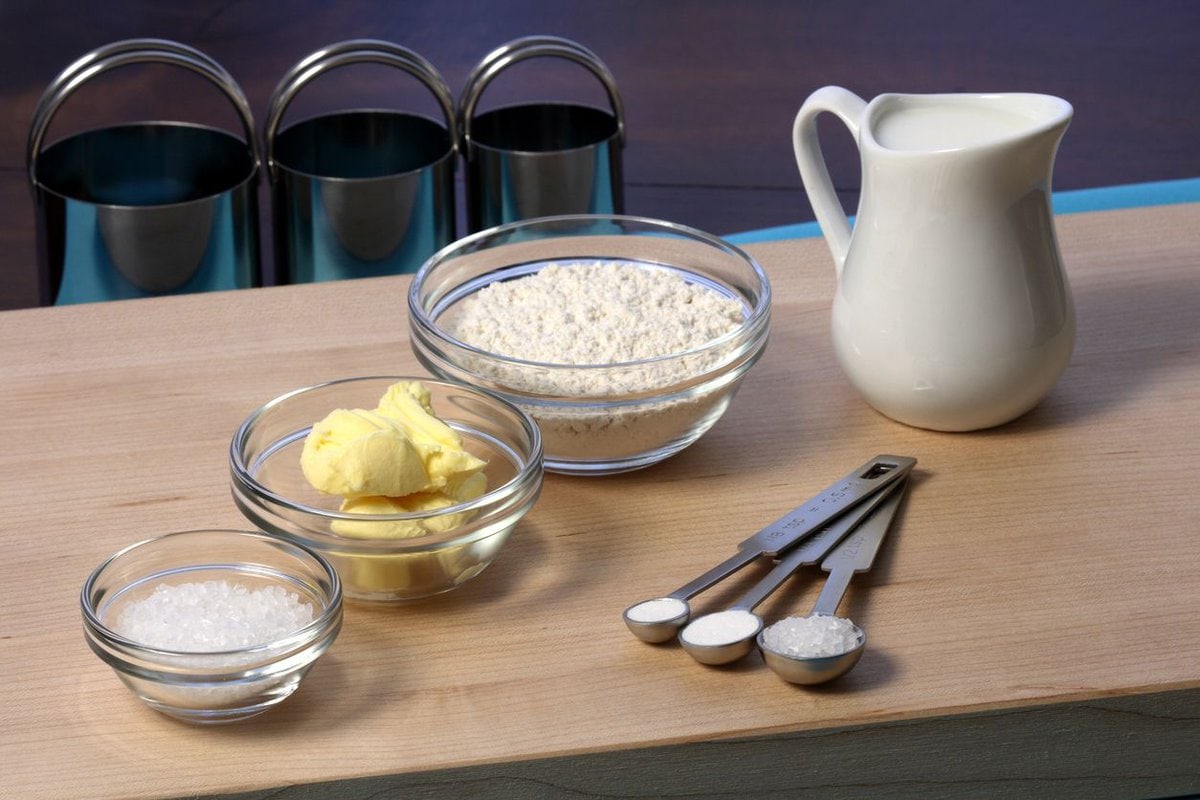You may be wondering how many ounces are in a cup. The answer is not always as simple as you may think.
There are different measurements for ounces - fluid ounces and dry ounces. Learning the difference is essential for being a great cook and baker.

Ounces Vs. Fluid Ounces
To figure out how many ounces are in a cup, you need to understand the difference in ounces and fluid ounces. Ounces measure weight, while fluid ounces measure volume, or how much space the liquid takes up.
Because they measure different things (weight vs volume), there is no direct conversion between ounces and fluid ounces.
Ounces (Weight)
Ounces are used to measure the weight of substances. This type of measurement is used for measuring ingredients in cooking and baking, but it can also be used for other purposes as well. Measuring the weight in ounces is the most accurate way to measure dry ingredients, such as flour, sugar, and grains. You can measure ounces using a kitchen scale.
Weighing dry ingredients is more accurate than measuring by volume because different ingredients have different densities. For example, 1 cup of flour will be heavier than 1 cup of popcorn because it is dense. Even two cups of flour can have different weights depending on how packed they are in the cup. Using weight instead of volume will eliminate this problem.
Fluid Ounces (Volume)
Fluid ounces are used to measure volume. There are 8 fluid ounces in a cup. It's best to measure liquids in a measuring cup specifically for liquids. Pour the liquid ingredient into the measuring cup until it reaches the desired marking on the cup. You cannot measure fluid ounces using a kitchen scale because it is a measure of volume, not weight.
- 1 cup = 8 fluid ounces
- 1 pint = 2 cups = 16 fluid ounces
- 1 quart = 2 pints = 4 cups = 32 fluid ounces
- 1 gallon = 4 quarts = 128 fluid ounces
- ½ cup = 4 fluid ounces
- ¼ cup = 2 fluid ounces
How Many Ounces in a Cup?
So there are 8 fluid ounces in a cup. But there is not a specific number of ounces in a cup because it depends on the ingredient. Each ingredient will have a different weight in ounces depending on its density.
Imperial Measurements to Metric Measurements
Cups, ounces, and fluid ounces are all measurements in the imperial system. But you can convert them to measurements in the metric system.
- One ounce is equivalent to approximately 28 grams. To convert from ounces to grams, multiply the number of ounces by 28.
- One fluid ounce equals around 30 milliliters. To convert from fluid ounces to milliliters, multiply the number of fluid ounces by 30.
Imperial to Metric Conversion Chart
| Convert | To | Multiply by |
|---|---|---|
| Fahrenheit | Celsius | (°F - 32) x 5/9 = °C |
| Inches | Meters | 0.0254 |
| Inches | Centimeters | 2.54 |
| Inches | Millimeters | 25.40 |
| Feet | Meters | 0.30 |
| Yards | Meters | 0.91 |
| Yards | Kilometers | 0.00091 |
| Miles | Kilometers | 1.61 |
| Ounces | Milliliters | 29.57 |
| Cups | Milliliters | 236.6 |
| Quarts | Liters | 0.95 |
| Gallons | Liters | 3.785 |
| Ounces | Milligrams | 28350 |
| Ounces | Grams | 28.35 |
| Pounds | Kilograms | 0.454 |
| Tons | Kilograms | 907.18 |
Type a value in the Ounces field to convert the value to Grams:
Ounces to Grams converter
Grams:
There are eight fluid ounces in a cup. But there is no single answer to the question of how many ounces are in a cup.
Different ingredients will have different weights depending on their density. To be a great cook or baker, it is important to understand the difference between weight and volume measurements as well as imperial and metric measurements.
Being familiar with these concepts will help you achieve success in the kitchen.


